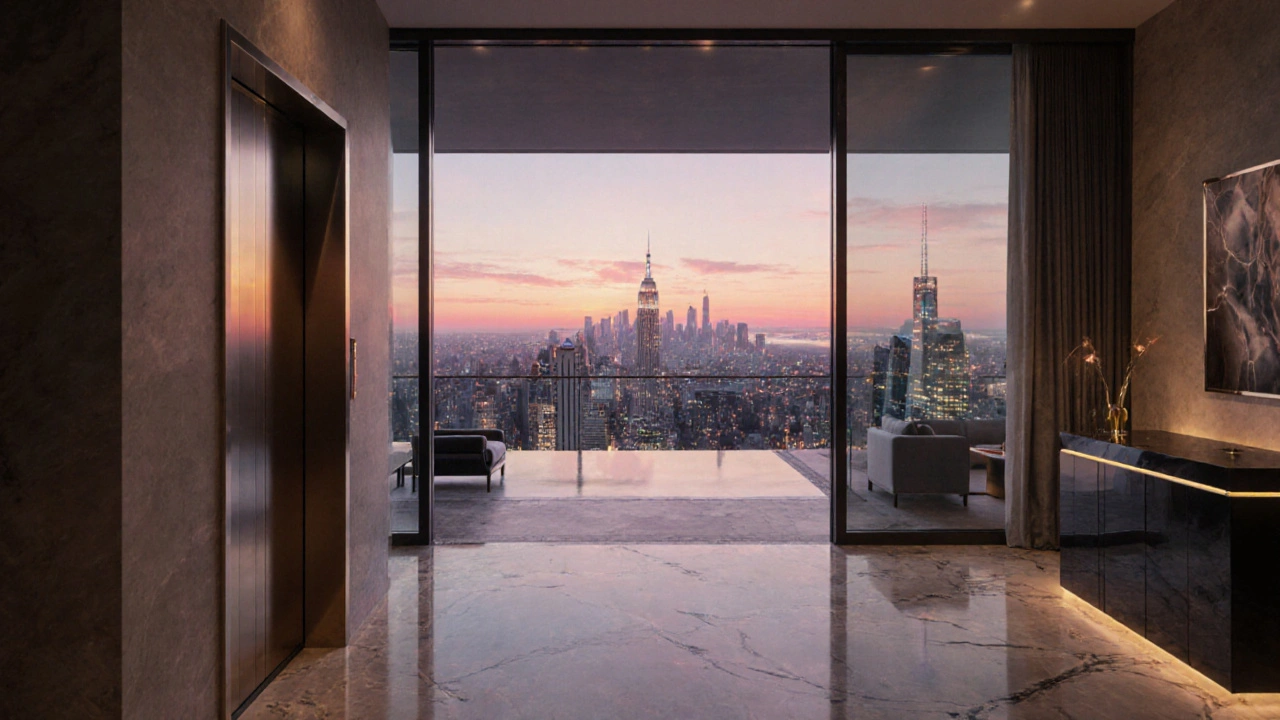When it comes to Luxury real estate is a high‑end property segment characterized by premium locations, exceptional design, and exclusive amenities, the rules of the game shift. Buyers aren’t just looking for a roof over their head; they’re chasing status, privacy, and a solid financial foothold. Whether you’re a seasoned investor or a first‑time buyer with a sizable portfolio, understanding the nuances of this market can mean the difference between a savvy purchase and a costly mistake.
Key Takeaways
- Luxury properties thrive in prime locations is global hubs with strong economic fundamentals, limited supply, and high demand from affluent buyers.
- High net worth individuals (HNWI) prioritize privacy, concierge services, and unique architectural features.
- Financing often involves jumbo loans, private equity, or cash transactions, each with distinct risk profiles.
- Historical data shows average price appreciation of 7‑10% annually in top luxury markets, outpacing many traditional assets.
- Regulatory nuances-zoning, taxes, and foreign‑buyer restrictions-can dramatically affect returns.
Defining Luxury Real Estate
Luxury real estate isn’t defined solely by price tag. While a million‑plus price tag is a common benchmark in many cities, the true marker lies in the combination of amenities is features such as private elevators, infinity pools, and 24‑hour concierge that elevate the living experience, architectural pedigree, and the exclusivity of the address. In Manhattan, a $3million condo with a private terrace may feel ordinary, while in Monaco, a €20million penthouse with a yacht dock is the norm.
Who Is Buying? The Role of High Net Worth Individuals
At the heart of the market are high net worth individuals is people with investable assets exceeding $1million, often seeking diversification, lifestyle upgrades, and legacy assets. Their purchase drivers differ from typical homebuyers:
- Privacy: gated communities, private entrances, and advanced security systems.
- Experience: designer interiors, art installations, and bespoke services.
- Investment Logic: view the home as an asset that can generate rental income or appreciate over time.
Prime Locations That Command Premiums
Location remains the single most powerful factor. Below are five markets that consistently attract luxury capital:
- Manhattan, New York is the epicenter of US finance, culture, and global connectivity, with limited land and sky‑high demand.
- London’s Mayfair is a historic district offering proximity to the West End, elite schools, and a tax‑friendly environment for foreign investors.
- Dubai’s Palm Jumeirah is an artificial archipelago known for ultra‑modern villas, waterfront views, and zero‑income tax policies.
- Hong Kong Island is a dense financial hub where limited space drives sky‑high prices for sea‑view apartments.
- Sydney’s Point Piper is a harborside suburb appreciated for its ocean vistas and proximity to the central business district.

Property Types and Their Unique Value Propositions
Luxury properties span various property types is categories such as penthouses, villas, historic mansions, and ultra‑modern condominiums, each catering to different lifestyle preferences:
- Penthouses: top‑floor units offering panoramic cityscapes and private terraces.
- Villas: sprawling estates with gardens, pools, and often private staff quarters.
- Historic Mansions: properties with architectural heritage, appealing to collectors and connoisseurs.
- Ultra‑Modern Condos: cutting‑edge design, smart‑home integration, and shared luxury amenities.
Financing Luxury Purchases
Because price points often exceed conventional loan limits, financing strategies differ. Common approaches include:
- Jumbo loans is mortgages that exceed the standard conforming loan ceiling, typically requiring higher credit scores and larger down payments.
- Private equity funds that purchase properties outright and lease them back to the buyer.
- Cash transactions, especially from overseas investors looking to close quickly.
- Seller financing, where the seller acts as the lender for a portion of the purchase price.
Each option carries its own risk profile. Jumbo loans may have higher interest rates, while cash purchases forego potential leverage benefits.
Investment Returns and Capital Appreciation
Luxury real estate can deliver solid returns, but metrics differ from rental apartments. Investors track two key figures:
- Capital appreciation is the increase in property value over time, often driven by scarcity, location, and macro‑economic conditions, which historically averages 7‑10% annually in top markets.
- Cap rate is the net operating income divided by the property’s current market value, typically lower (3‑5%) for luxury assets because of higher acquisition costs.
Renting a penthouse in Manhattan can generate a 4% gross yield, but owners often prioritize appreciation and lifestyle benefits over cash flow.
Market Trends Shaping Luxury Real Estate
Recent data points highlight three dominant trends:
- Increasing demand from Asian ultra‑wealthy buyers, especially in cities like Hong Kong and Singapore.
- Growth of secondary luxury markets (e.g., Austin, Texas; Miami’s Brickell) as buyers diversify beyond traditional global hubs.
- Integration of technology-smart home systems, AI‑controlled climate, and virtual tours-has become a baseline expectation.
These forces keep inventory tight, pushing price per square foot to record highs.

Risks and Regulatory Considerations
Even the most glamorous deals have hidden pitfalls. Pay attention to:
- Zoning restrictions is local laws governing land use, building height, and permissible modifications, which can limit future renovations or expansions.
- Foreign‑buyer taxes, such as Vancouver’s 20% levy or the UK’s stamp duty surcharge for non‑residents.
- Inheritance and estate tax implications, especially for properties held in offshore structures.
- Market volatility: while luxury assets have historically resisted downturns, events like the 2020 pandemic showed price corrections of up to 12% in some cities.
Luxury vs. Standard Real Estate: A Quick Comparison
| Aspect | Luxury Real Estate | Standard Real Estate |
|---|---|---|
| Price per Sq Ft | $2,500 - $10,000+ | $200 - $500 |
| Typical Buyer | HNWI, investors, celebrities | First‑time homebuyers, families |
| Financing | Jumbo loans, cash, private equity | Conventional mortgages |
| Appreciation Rate | 7‑10% annually (top markets) | 3‑5% annually |
| Regulatory Burden | Higher foreign‑buyer taxes, stricter zoning | Standard local taxes |
Action Checklist for Prospective Buyers
- Define your primary goal: lifestyle, investment, or both.
- Research market‑specific price trends and upcoming supply pipelines.
- Engage a specialized luxury broker who understands confidentiality and negotiation nuances.
- Secure financing early; compare jumbo loan rates with private equity options.
- Conduct thorough due diligence on title, zoning, and tax implications.
- Plan for post‑purchase management-property management firms, concierge services, and resale strategy.
Frequently Asked Questions
What defines a property as "luxury"?
Luxury status is a blend of price, location, design, and exclusive amenities. In major cities, a price above $2million, a prime address, and features like private elevators or concierge services typically qualify a home as luxury.
Can I finance a luxury home with a traditional mortgage?
Most banks require a jumbo loan for purchases exceeding the conforming loan limit (around $1million in many U.S. markets). These loans need higher credit scores, larger down payments, and may carry higher rates. Cash or private equity are common alternatives.
Which cities offer the best appreciation potential?
Historical data points to Manhattan, London’s Mayfair, Hong Kong Island, Dubai’s Palm Jumeirah, and Sydney’s Point Piper as top performers, with average annual gains of 7‑10% over the past decade.
Do foreign buyers face extra taxes?
Yes. Many jurisdictions impose surtaxes on non‑resident purchasers-e.g., a 20% levy in Vancouver, a 7% stamp duty surcharge in the UK, and a 3% buyer’s tax in Singapore.
Is renting out a luxury property a good income strategy?
Short‑term luxury rentals can generate 4‑6% gross yields in high‑traffic cities, but owners must weigh management costs, brand protection, and potential wear on high‑end finishes.

10 Responses
Look, if you’re serious about wealth you already know the U.S. market outshines those overpriced overseas playgrounds. The luxury game is a backyard contest where American investors set the standards, not some foreign elites whining about taxes. You don’t need a concierge in Dubai when Manhattan offers a skyline that screams power. And don’t be fooled by the hype around “smart‑home” gimmicks-they’re just flashy toys for the insecure. Real value comes from location, scarcity, and the ability to leverage a solid credit line. If you’re still chasing a vanity address in a far‑flung archipelago, you’re playing checkers while the big players are moving chess pieces in Manhattan.
Thank you for your perspective. I appreciate the emphasis on location and credit considerations when evaluating high‑end properties. Your points are well noted.
The luxury real‑estate ecosystem is far more intricate than a simple comparison of price tags. While location remains the cornerstone of value, investors must also weigh cultural, regulatory, and macro‑economic factors that differ from market to market. For instance, a penthouse in Manhattan enjoys unparalleled liquidity, yet it also navigates stringent zoning laws that can limit future development. Conversely, a villa on Dubai’s Palm benefits from tax‑free status but is subject to geopolitical flux that may affect long‑term capital appreciation. Understanding these nuances requires a dialogue between the buyer, a knowledgeable broker, and often a local legal counsel. Moreover, the buyer’s primary objective-whether it is lifestyle, legacy, or leveraged return-should dictate the financing structure chosen. Jumbo loans, while accessible, carry higher interest rates and stricter covenants, making cash purchases attractive for those with sufficient liquidity. Private equity arrangements, on the other hand, can provide flexibility but may also dilute ownership control. It is also essential to recognize the rising influence of Asian ultra‑wealthy investors, who bring distinct expectations regarding privacy and service standards. Their demand has spurred the development of gated enclaves and integrated concierge ecosystems in cities like Hong Kong and Singapore. At the same time, secondary luxury markets such as Austin and Miami are emerging as viable alternatives, offering comparable amenities with lower entry barriers. Technology integration, including AI‑driven climate control and immersive virtual tours, has shifted from a novelty to a baseline expectation among discerning buyers. However, technology should complement, not replace, the timeless appeal of architectural craftsmanship and site exclusivity. Risk management remains paramount; investors should conduct thorough due diligence on zoning restrictions, foreign‑buyer levies, and potential estate tax implications. Ultimately, a balanced approach-combining rigorous financial analysis with an appreciation for the intangible qualities of luxury-will yield the most resilient portfolios. I encourage fellow investors to stay informed, remain open to diverse opportunities, and prioritize both quantitative returns and qualitative satisfaction.
Honestly, all that talk about “balance” and “intangible qualities” sounds like trying to romanticize a money‑laundering scheme. You’re basically glorifying a system that lets the ultra‑rich hoard resources while ordinary folks scramble for rent. It’s theatrical to claim technology adds value when it simply serves as a status symbol for the elite. The narrative you push ignores the inevitable social fallout of concentrating wealth in glittering towers. If we keep polishing these palaces, we’re just building monuments to inequality.
Wow this whole luxury real estate spiel feels like a carnival of excess its all shiny glitter and no substance the prices are astronomical but who cares when you can flaunt a private elevator and a rooftop pool its basically a vanity project for the narcissistic elite and the rest of us are left squinting at the sky wondering why the rent keeps climbing
Think of a luxury property not just as a monument of money but as a canvas for possibility when you own a space that inspires you you tap into a higher frequency of ambition let that vision drive you to invest wisely and watch your legacy grow beyond bricks and mortar
Investing in high‑end real estate can feel daunting at first, especially when the numbers seem astronomical, but remember that every great journey begins with a single step. By approaching each market with curiosity, you open yourself to a world of cultural richness that goes beyond pure profit. Embracing the community aspects of a neighborhood can foster connections that add intangible value to your life. When you walk through a meticulously designed lobby, you’re experiencing the culmination of art, engineering, and human ambition. Let that inspire you to seek out properties that not only appreciate in dollars but also elevate your daily experience. Consider the way natural light floods a penthouse and how that can improve wellbeing. Picture a serene garden in a private villa providing a sanctuary from the hectic pace of modern life. This blend of tangible returns and personal fulfillment creates a holistic investment philosophy. Even if market fluctuations occur, your appreciation for the space’s aesthetic and functional qualities remains steady. Stay open to emerging markets, as they often present hidden gems waiting to be discovered. With patience and a thoughtful strategy, you can build a legacy that resonates for generations. Keep your optimism grounded in diligent research, and you’ll navigate the luxury landscape with confidence.
Your advice is spot on, and I’d add that paying attention to the fine print in purchase agreements can prevent costly surprises later. Also, double‑checking the property’s zoning classification ensures future renovation plans won’t hit regulatory roadblocks.
While it’s commendable that you’re considering secondary luxury markets, let’s not pretend they’re immune to the same supply‑and‑demand dynamics that drive Manhattan’s prices. A modest‑priced villa may still cost a fortune once you factor in maintenance, taxes, and the inevitable “luxury premium.”
The U.S. market always outperforms foreign locales.